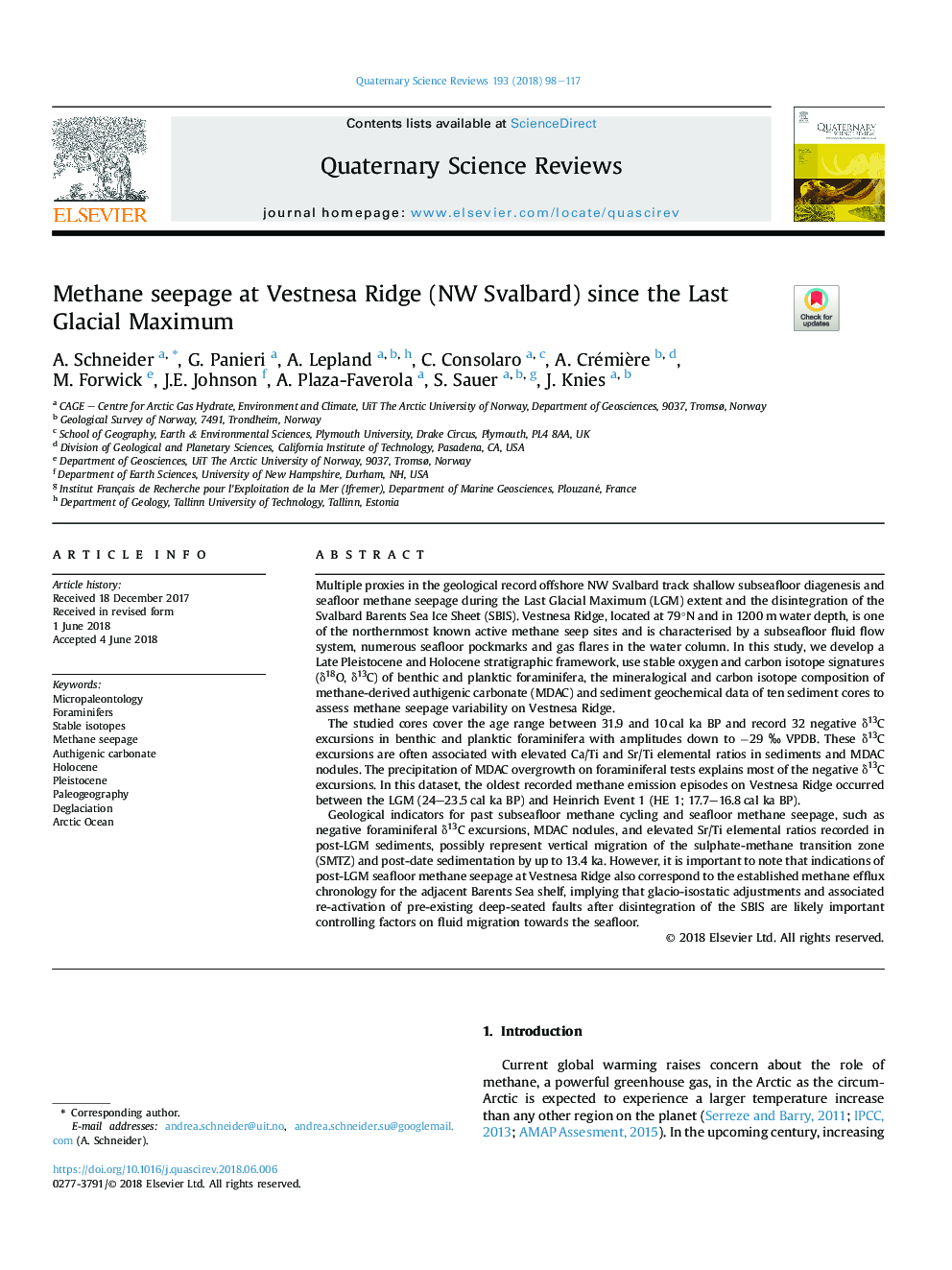| Article ID | Journal | Published Year | Pages | File Type |
|---|---|---|---|---|
| 8914680 | Quaternary Science Reviews | 2018 | 20 Pages |
Abstract
Geological indicators for past subseafloor methane cycling and seafloor methane seepage, such as negative foraminiferal δ13C excursions, MDAC nodules, and elevated Sr/Ti elemental ratios recorded in post-LGM sediments, possibly represent vertical migration of the sulphate-methane transition zone (SMTZ) and post-date sedimentation by up to 13.4 ka. However, it is important to note that indications of post-LGM seafloor methane seepage at Vestnesa Ridge also correspond to the established methane efflux chronology for the adjacent Barents Sea shelf, implying that glacio-isostatic adjustments and associated re-activation of pre-existing deep-seated faults after disintegration of the SBIS are likely important controlling factors on fluid migration towards the seafloor.
Keywords
Related Topics
Physical Sciences and Engineering
Earth and Planetary Sciences
Geology
Authors
A. Schneider, G. Panieri, A. Lepland, C. Consolaro, A. Crémière, M. Forwick, J.E. Johnson, A. Plaza-Faverola, S. Sauer, J. Knies,
